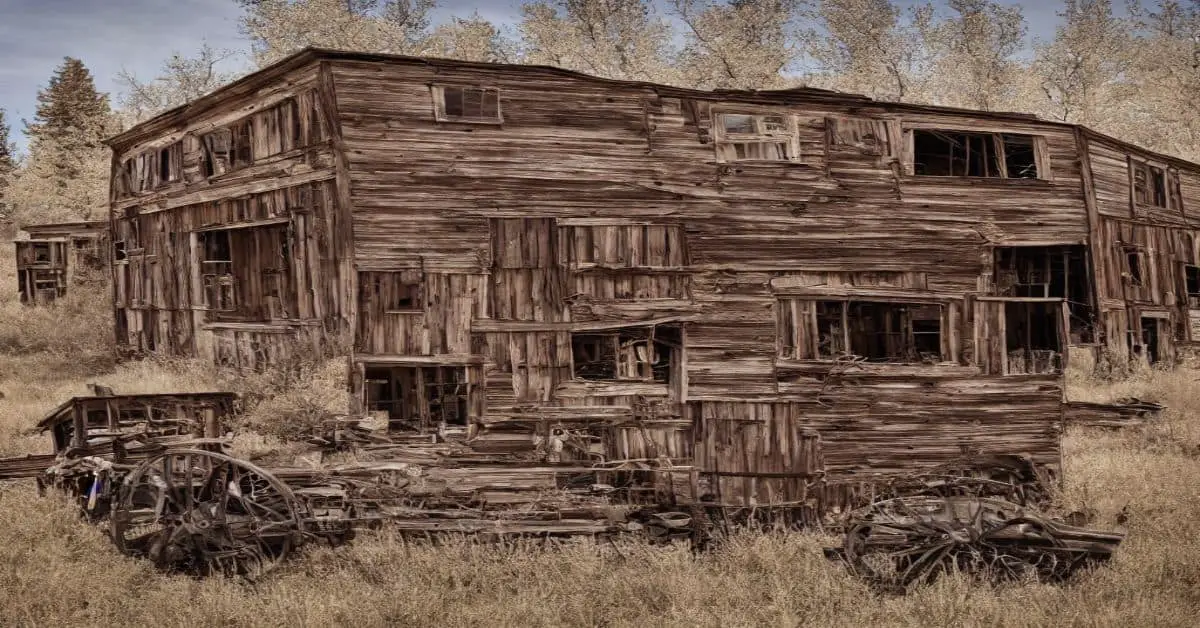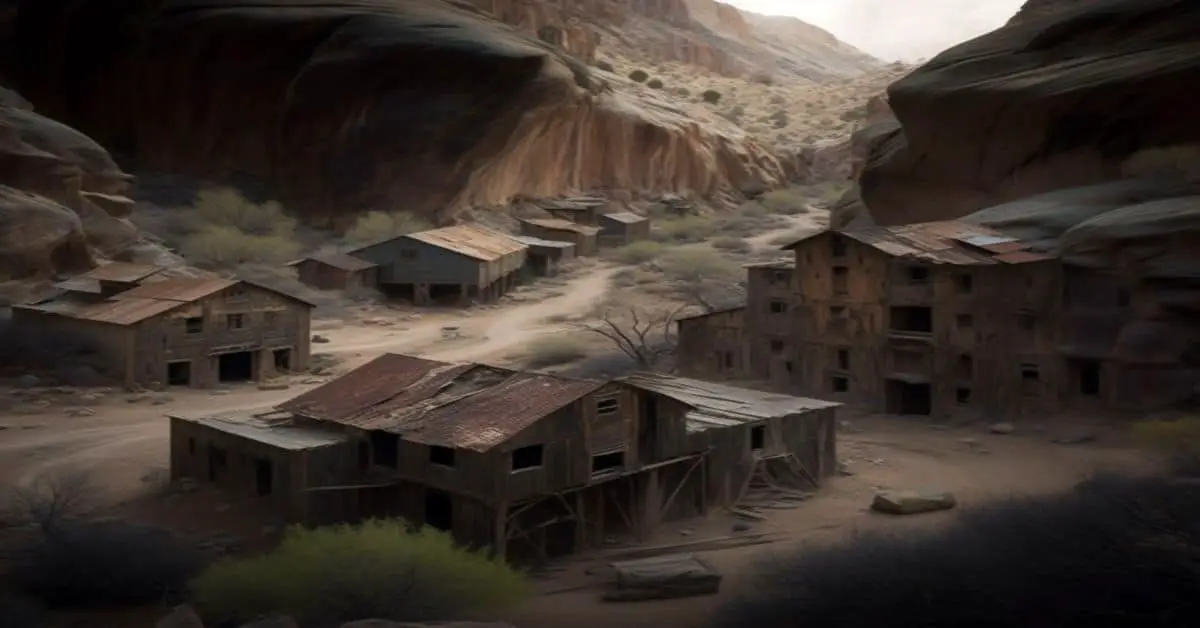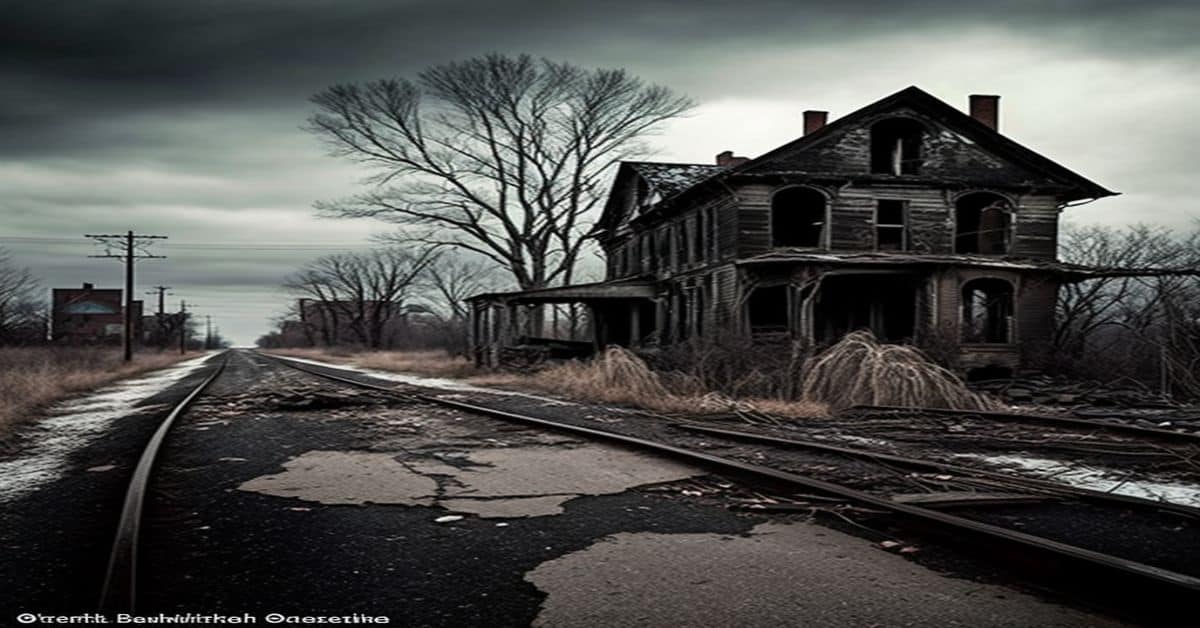Kingsmill, a small town in the Texas panhandle, was once a thriving community of around 50 people. However, the town’s fate was tragic when a chemical company contaminated its water wells, leading to the forced buyout of all the homes and the eventual land clearing.
Despite Kingsmill’s tragic history, the town’s story serves as a reminder of the impact of environmental contamination on small communities. This article will explore the history and decline of Kingsmill and its current status as a ghost town. Through a comprehensive examination of the events that led to the town’s abandonment, readers will gain insight into the lasting effects of environmental contamination on rural populations.
Additionally, we will examine what remains of Kingsmill today, including the lone grain elevator that serves as a haunting reminder of the town’s past.
Key Takeaways
- The contamination of Kingsmill’s water wells by a chemical company led to the forced buyout of all homes and the eventual clearing of the land, rendering it unusable for any future development.
- The tragic history of Kingsmill serves as a cautionary tale about the potential consequences of industrial activities. It emphasizes the need for responsible corporate behavior and stringent environmental regulations to protect natural resources and prevent harm to communities.
- The complex relationship between industry, community, and the environment is highlighted in the story of Kingsmill, offering a glimpse into the lasting effects of environmental contamination on rural populations.
- The lone grain elevator in Kingsmill, now inaccessible due to safety concerns, stands as a towering structure that serves as a reminder of the town’s former existence and the impact of industrialization on small communities and the environment.
Location and History
The Texas ghost town of Kingsmill, located in the panhandle west of Pampa, experienced a decline in population due to the contamination of water wells by a chemical company. This led to the company buying out all homes and clearing the land, leaving only a grain elevator as the remaining structure. As a result, the town’s population dwindled to about 50 people a decade ago.
Despite its ghostly existence, Kingsmill still remains a tourist attraction for those interested in local culture. The town’s history and decline serve as a reminder of the impact of industrialization on small communities and the importance of environmental regulations to protect natural resources.
The remaining grain elevator, a testament to the town’s agricultural roots, is a unique sight for visitors. Overall, Kingsmill’s story offers a glimpse into the complex relationship between industry, community, and the environment.
Reason for Decline
Due to the pollution of the water wells by a chemical company, the inhabitants of Kingsmill were forced to leave their homes, and the land was subsequently cleared, leaving only a solitary grain elevator as a reminder of the town’s past.
The contamination of the water wells had a significant impact on the community, as it resulted in the displacement of the residents and the loss of their homes and livelihoods.
The chemical company responsible for the contamination bought out all the homes and cleared the land, leaving the town deserted and uninhabitable.
The contamination impact on Kingsmill serves as a reminder of the devastating effects of environmental pollution on communities. The chemical company’s negligence displaced the town’s inhabitants, who had to abandon their homes and move elsewhere.
The contamination also had significant environmental consequences, as the land was rendered unusable for any future development.
The story of Kingsmill highlights the importance of responsible corporate behavior and the need for stringent environmental regulations to prevent similar incidents from occurring in the future.
Current Status
Currently, the only remaining structure in the former town of Kingsmill is a grain elevator. The town was abandoned after the contamination of water wells by a chemical company, which eventually bought out all of the homes and cleared the land. The grain elevator is a towering structure that is a testament to the town’s former existence. However, it is now inaccessible to the public due to safety concerns.
Despite the lack of access to the grain elevator, there are still exploration opportunities in the area. The ghost town of Kingsmill is a popular destination for urban explorers and photographers who are drawn to the eerie, abandoned atmosphere.
However, it is important to note that the environmental impact of the contamination in Kingsmill should not be ignored. The town’s story is a cautionary tale about the potential consequences of industrial activities and the importance of responsible environmental management.
Frequently Asked Questions
What was the name of the chemical company that caused the contamination of Kingsmill’s water wells?
The chemical company responsible for contaminating Kingsmill’s water wells remains unnamed. The impact on the local community was significant, resulting in the company buying out all homes and clearing the land, leaving only a grain elevator.
What steps, if any, were taken to remediate the contamination of Kingsmill’s water wells?
Steps taken for remediation of Kingsmill’s contaminated water wells are unclear. The impact on the community was devastating, resulting in the buyout of all homes and the clearing of land by the responsible chemical company.
Are there any plans or efforts in place to restore or repopulate Kingsmill?
Efforts for repopulation and community renewal initiatives in Kingsmill, a Texas ghost town, are non-existent. The contamination of water wells by a chemical company led to the buyout of all homes and the clearing of the land, leaving only a grain elevator standing.
What other industries or economic activities, if any, existed in Kingsmill prior to its decline?
Historical records indicate that Kingsmill, a Texas ghost town, was once a thriving community with various economic activities, including agriculture, ranching, and oil production. Today, the only remaining landmark is a grain elevator, and no known restoration or community development plans exist. Tourism is not recommended due to contamination of water wells by a chemical company.
Are there any notable landmarks or attractions in the area that visitors to Kingsmill might be interested in visiting?
Exploring nature enthusiasts can visit the nearby Lake McClellan Wildlife Management Area, offering fishing, hiking, and camping. Local cuisine lovers can indulge in the famous Texas barbecue at Pampa’s Big Texan Steak Ranch.



